Why Should You Hire A Professional for HVAC Maintenance?
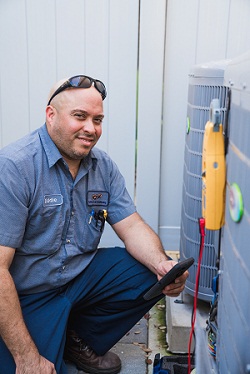
When Willis Carrier, a 25-year-old engineer, invented the first air conditioner in 1902, he could never have dreamed it would become a standard nationwide accessory.
It can often feel that your heat, ventilation, and air coolant systems come on, as if by magic. Yet, the reality is that each of these units is a complex maze of wires, tubes, and coils, not to mention the temperature-resistant fluids required to keep the system running smoothly.
HVAC technicians are professionally trained on each module, allowing them to inspect, assess, and repair any issues. There are many reasons why you should never attempt to self-diagnose or repair your systems when they aren’t working properly.
Safety
Safety should always be your first priority. Heating, ventilation, and coolant systems can be dangerous if safety steps aren’t followed. A trained, certified HVAC technician knows how to safely interact with the wiring and plumbing, both to protect himself and prevent causing irrevocable damage to your unit.
Knowledge Base
A fully trained HVAC technician completes two full years of education and hands-on training. The curriculum is rigorous, giving them opportunities to interact with a myriad of system failures, then practice solutions. Chances are that the person who shows up at your door has seen your HVAC issue before and can fix it efficiently.
Finances
If your system is under warranty, you run the risk of invalidating the coverage if anyone other than a certified technician addresses the issue. Moreover, trained HVAC staff know how to diagnose starting with the most commonly seen problems. Often, they’re quick to spot, easy to resolve, and, best of all, not that expensive. Companies report that many home or business owners who try self-repair as a way to save money actually end up causing major damage to the system. In the end, they end up spending copious amounts to repair, or replace, the unit.
Specialized Tools
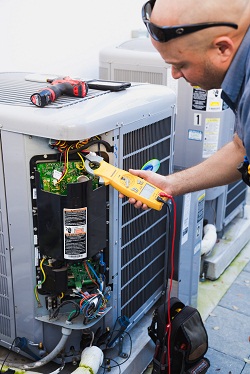
Continuing Education
To maintain current certification, HVAC technicians must stay up-to-date on the most recent findings in the industry and renew their license annually.
Recordkeeping
When you hire someone from a reputable company they keep track of your system issues, complete routine maintenance on time, and “know” your system. This is especially useful when you call to report an issue. They have no need to duplicate past tests and can diagnose the new problem quickly.
If you’re experiencing malfunctions with your heating, ventilation, or coolant systems, don’t attempt to fix it yourself. Call a trained, certified, and experienced HVAC technician.
What Are the Conditions under Which Mold Grows?

Mold lives on three things: water, organic matter, and heat. When the right moisture content combines with an ideal temperature around sheetrock, paper, or fabric, it creates mold growth. When these conditions persist over time, the mold spreads and evolves, often causing health issues. Take the time to learn the optimal growing conditions for mold so you can keep yourself, and your family, safe.
Water
Standing water is a perfect environment for mold growth. Algae is common in swimming pools, lakes, and ponds. Yet, because water exists in more than one state, it becomes a stealthy part of the recipe for mold in buildings.
Moisture control is key to preventing mold from growing in your home.
- Air Temperature
Depending on where you live, climate control can be a real challenge. If you live in a hot, dry area, your strategy for minimizing moisture will be different than if your landscape is extremely humid. Work with a trained HVAC technician to determine your home’s ideal moisture level to prevent mold from growing.
- Proper Ventilation
Standing moisture is an ideal setting for the evolution of mold spores. This is often an issue in bathrooms and other water-heavy areas. The moisture needs somewhere to go and a way to exit your home. You may need to install either a humidifier or a dehumidifier to keep the moisture from becoming excessive.
Organic Food Matter
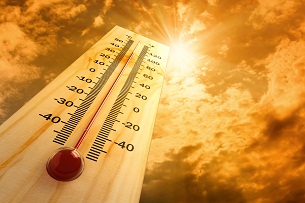
Heat
Heat is the most predictable of the three conditions that work in combination to grow mold. Mold generally doesn’t grow in consistently cold environments. However, if you’re located in a climate that is hot and humid at least part of the year, you may already have mold present in your home.
The ideal temperature for mold growth is at least 70-degrees Fahrenheit or 20-degrees Celsius. If you’re in a region that’s warm year-round, it’s essential you hire a trained, certified HVAC worker to install an air-conditioning unit in your home. This is the first step to controlling mold growth and its ability to spread throughout your house.
Call a trained HVAC technician from a reputable company today. Have them do a thorough sweep of your home, both the interior and exterior, to determine your current mold profile: varieties, quantities, and toxicity. They’ll create a plan to minimize the rate of growth and keep your family safe.
How Your Thermostat Helps Maintain the AC Temperature at Home

The evolution of digital thermostats and wirelessly connected devices are taking home temperature regulation to a whole new level. Manual thermostats are being replaced with digital models with increasing frequency. Homeowners are choosing digital thermostats for a number of compelling reasons.
Programmability
No one likes the idea of wasting money, but that’s exactly what you’re doing when your house is vacant and the thermostat is still telling the heat or air-conditioning systems to regulate the temperature.
Imagine programming the device to make the house comfortable during the early morning hours before you leave and just before you return from work. In the intermittent hours your digital thermostat automatically adjusts the air temperature, reducing your fuel and electricity bill. You can even program your digital device to maintain a specific temperature when you go away on vacation, having it reset to your base settings just before you return.
Efficiency
Digital thermostat systems work in tandem with energy-efficient furnaces and air-conditioners. After installation and programming, the three devices work as one system, continually communicating with each other based on the settings you chose. Your furnace and air-conditioner are always at the ready, waiting for the signal from the thermostat to do their job.
The Process
Unlike a wired model, digital thermostats communicate with your air-conditioner without employing any moving parts. Instead, they use thermistors and semiconductors to measure air temperature. Digital devices are fitted with screens that always display the current room temperature, which mode is engaged (heat or cool), the day of the week, and in some models, a humidity read-out.
Based on the data the thermostat automatically triggers a virtual “switch” via a triad. The triad receives the signal, switching the current, and creates a change in air quality.
Savings
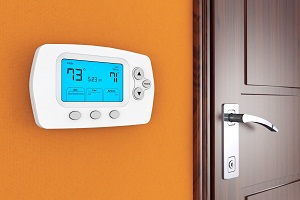
Newer digital thermostats are able to signal the homeowner when something isn’t quite right with their system. These tend to be quick service calls with immediate resolutions. Gone undetected, small issues can become massive malfunctions over time, costing far more than a service call fee (which may be covered under your warranty) and a few small replacement parts.
Accessibility
The smartphone in your back pocket gives you immediate access to nearly everything you need to run your daily life. And now, by installing a quick app, it can give you control of your digital thermostat too. Imagine leaving for a week-long business trip and not being sure you reset the system for your extended vacancy. Simply pull out your phone, open the app and made the necessary adjustments.
5 Tricks to Save Money on Air Conditioning This Summer
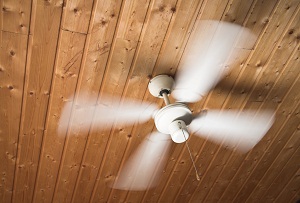
1. Fans Still Work
Just because you have air conditioning doesn’t mean you can’t use a ceiling or area fan to keep things comfortable. When a fan is running, the wind chill effect makes you feel 6 to 7 degrees cooler, which means you can raise the thermostat a few degrees, thereby saving you a little money. Don’t forget to turn off that fan, however, when you leave the room.
2. Turn up the Thermostat
Don’t get in the habit of keeping the thermostat set to 65°. The idea is to keep the house as warm as you can handle. Start at 72° then gradually increase the heat until you no longer feel comfortable. Setting your thermostat to 78° instead of 72°will save you up to 18% on your monthly electric bill. Raising the thermostat further when you’re sleeping or out of the house can also make a significant dent in your costs.
3. Keep Your A/C Systems in Good Shape
Your air conditioning will only work as well as its equipment is maintained. That means cleaning and replacing your filters once a month. If you have central air, be sure the unit’s evaporator and condenser coils aren’t covered in dust or leaves. Also, make sure any foliage is at least 2 feet away from the condenser. Simple fixes like these can save you up to 15%.
4. Avoid Generating Heat within the House
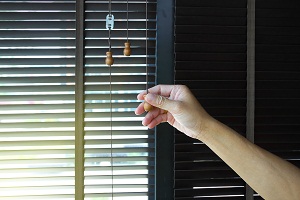
5. Leave the Shades and Blinds Closed
The sun is the problem to begin with, so you want as little sunlight within the home as possible. It’s shocking how much of a difference you’ll see in your electricity bill just by keeping the curtains closed. Hanging shades as close to the windows as you can and keeping them shut can reduce heat entering your home by as much as 45%.
Just being attentive and applying these simple tricks lets you have a great summer without suffering the sting of sky-high energy bills.
The Benefits of Using an Air Purifier
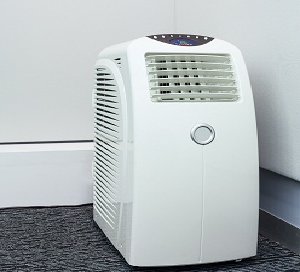
Clean Air and Lung Health
Using an air purifier guarantees that the air in your home will be clean. According to the EPA, the air indoors is, on average, two to five times dirtier than the air outdoors, sometimes even more. An air purifier can remedy this and keep you and your family healthy. The effects are especially beneficial for the lungs. Regularly breathing in pollen, dust, dander, and other particles can have a negative impact on the lungs. You and your family members may experience long-term breathing and health issues, depending on how dirty the air is. With a purifier, you can ensure you’re breathing clean air and your lungs will be healthy for a long time to come.
Remove Odors and Smoke
Air purifiers can also help to get rid of unpleasant odors in the home. All sorts of smells can fill a home, especially if you have kids or pets. Though you may love cooking and eating fish, you may not enjoy smelling it for the rest of the evening. An air purifier can help to remove odors all around the house. It can also help to neutralize the scent of smoke. Whether you have a smoker in the family, a fireplace, or an amateur chef who burns food frequently, this device can help. The purifier will trap the smoke before the smell gets stuck to your upholstery.
Pets

Dust and Other Allergens
As mentioned before, air purifiers can trap dust and other allergens that may be floating in the air. Unfortunately, there is no way to remove dust from your home completely. Even the cleanest homes will have some dust build-up. However, with an air purifier, you can catch a lot of the dust before it settles, leaving you with less clean-up to take care of. These devices can also trap other irritants, which can limit the impact of seasonal allergies. With a purifier, the whole family can breathe a little easier.
Combat the Spread of Bacteria and Germs
A good air purifier can remove up to 99 percent of airborne bacteria and particles like pollen and mold spores. When the air is cycled through the filters, the majority of these bacteria are removed. They can also prevent germs and illnesses from spreading throughout your home. Next time your child comes home from school with a cold, turn on an air purifier with a HEPA filter to neutralize 99.97 percent of airborne germs.



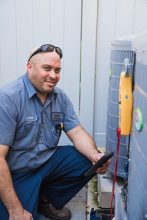


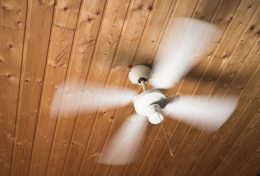
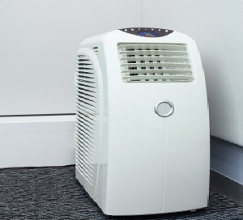

Recent Comments